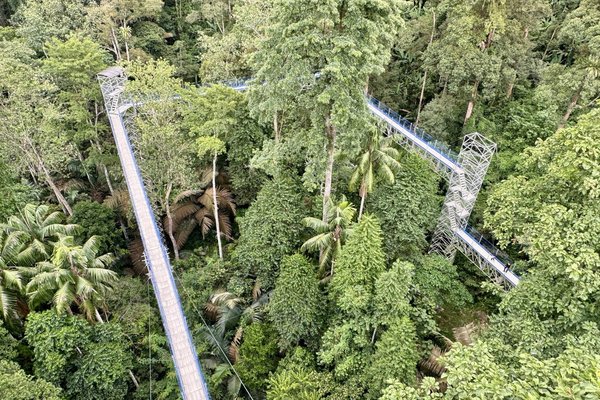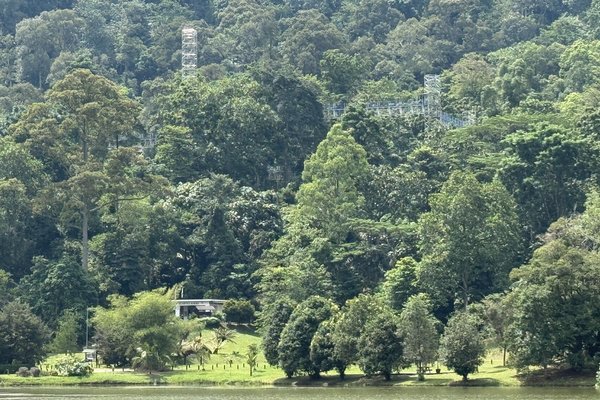Malaysia
FRIM Selangor
The Forest Research Institute Malaysia Forest Park Selangor covers a man-made tropical rainforest.
Its original landscape was destroyed by farming and tin mining. The forest was re-created from 1925 onwards, combining scientific experiments and traditional knowledge. It is adorned with streams, waterfalls and a botanical garden, and has matured into an ecosystem rich in biodiversity. 233 bird species, 62 mammal species, 82 reptile species, 34 amphibian species, and 21 freshwater fish species have been counted inside the park.
Community Perspective: located in the suburbs of Kuala Lumpur, it is an easy detour (if you use a taxi or your own car!), but don’t expect anything outstanding. See Frederik's review how to sign up for a more interesting Forest Walk than the more commonly visited Botanical Gardens and Skywalk.
Site Info
Official Information
- Full Name
- Forest Research Institute Malaysia Forest Park Selangor (ID: 1734)
- Country
- Malaysia
- Status
-
Inscribed 2025
Site history
History of FRIM Selangor
- 2025: Advisory Body overruled
- ICOMOS advised Referral
- 2025: Inscribed
- Meets criterion 4
- 2017: Added to Tentative List
- Added to tentative list
- Type
- Cultural
- Criteria
- iv
Links
- UNESCO
- whc.unesco.org
- Official
-
- frim.gov.my — Forest Research Institue Malaysia
All Links
UNESCO.org
- whc.unesco.org — whc.unesco.org
Official Website
- frim.gov.my — Forest Research Institue Malaysia
Community Information
- Community Category
- Secular structure: Park or garden
Travel Information
Reservation required
Entry to Canopy Walkway (Skywalk) and forest trails need to make a reservation
Recent Connections
-
Vernacular architecture
Malay Traditional House, part of FRIM c…
-
Wooden architecture
"lower-grade labourers were accommodate…
-
Tin mining
"planted from the 1920s onwards on heav…
Connections of FRIM Selangor
- Trivia
-
-
Built or owned by British
Part of British Colonial Government plan on reforestation experiment
-
Built or owned by Americans
FRIM's reforestation is a brainchild of Dr. F.W. Foxworthy, an American Botanist
-
- History
-
-
Inscribed in connection with an anniversary
100 years from 1925 the year of reforestation experiment begin
-
- Ecology
-
-
Rainforests
the reforestation forest
-
Critically endangered fauna species
FRIM supports 13 Critically endangered fauna species (ICOMOS AB)
-
- Architecture
-
-
Wooden architecture
"lower-grade labourers were accommodated in temporary wooden houses built in local kampung style" (AB ev)
-
Vernacular architecture
Malay Traditional House, part of FRIM collection of traditional timber houses, "lower-grade labourers were accommodated in temporary wooden houses built in local kampung style"
-
Art Deco
1929 Administration Building was designed in Art Deco Style
-
- World Heritage Process
- Human Activity
-
-
Rubber
was "an early 20th-century British-Malay rubber estate" (ICOMOS ev)
-
Tin mining
"planted from the 1920s onwards on heavily tin-mining degraded land" (AB ev)
-
Canopy Walkways
the Skywalk
-
- Timeline
-
-
Built in the 20th century
most of building complex and the forest are built in 20th Century
-
- Science and Technology
-
-
Scientific Developments
Research on reforestation
-
Botanical Gardens
Kepong Botanic Gardens Section
-
- Visiting conditions
-
-
Reservation required
Entry to Canopy Walkway (Skywalk) and forest trails need to make a reservation
-
News
No news.
Recent Visitors
Visitors of FRIM Selangor
- AC
- Alex Goh
- Bernard Joseph Esposo Guerrero
- Bin
- Bram de Bruin
- Can SARICA
- CugelVance
- Errol Neo
- Frederik Dawson
- Harald T.
- Jana and Matt
- Joel on the Road
- Ken DJ
- Kim, Soo-youn
- Kurt Lauer
- Kyle Magnuson
- Lukasz Palczewski
- Mikko
- Nafis N
- Naim Y
- Pierre T
- Ralf Regele
- ReallyDeepThoughts
- Reza
- Roman Bruehwiler
- RYU
- Shandos Cleaver
- SnakeGreen
- Stanislaw Warwas
- Szucs Tamas
- Taotao Chen
- Thomas van der Walt
- Vincent Cheung
- Wojciech Fedoruk
- Zoë Sheng
- Zos M
Community Reviews
Show full reviews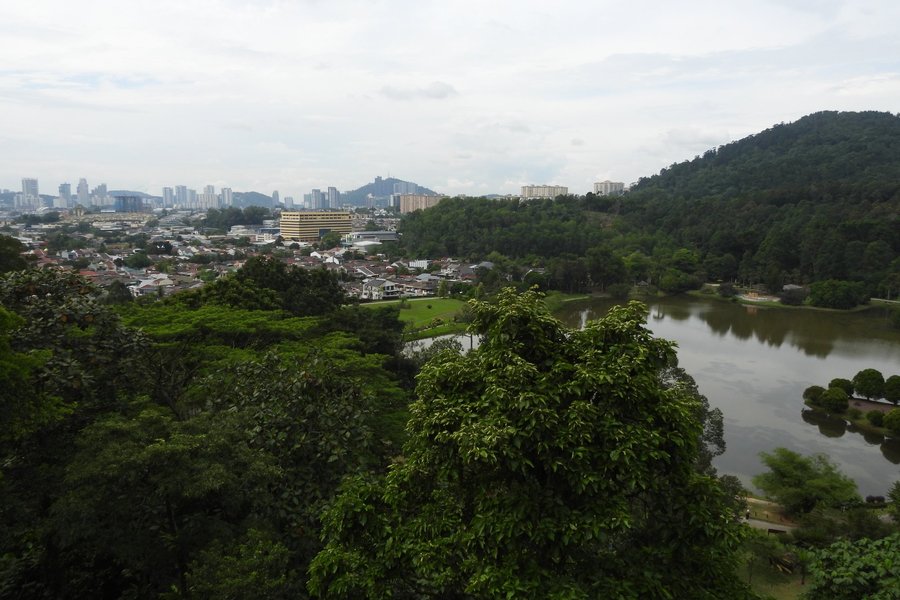
Visiting FRIM was a rather plodding experience. Firstly, the site is not as easily reachable as I had hoped. The local mass transit in Kuala Lumpur seems to be much less efficient than expected. Trying to reach FRIM during a stopover on Sunday, I discovered that the public rail system is quite slow - the trains crawl along the tracks, the frequency was very low ( about one train per hour), and none of the major tourist spots seemed to be on the same line. Every change of a train added at least one more hour to the travel time - I was faster walking than taking a train. As a stopover from the airport, this means at least 40 minutes with KL express to KL Sentral station, than 60-90 minutes with a local train in the direction of FRIM. However, none of the trains actually reaches the FRIM garden, so you have to take a bus or walk for half an hour in the tropical sun. FRIM itself obviously expects the visitors to arrive by their own car - there is no support for other possibilities. The bottom line is that I think the 4-5 hour minimal stopover time mentioned in another review is unrealistic - I wouldn't risk it even with an 8 hour stopover time. You need to assume a three hour connection time (one way) from the airport, and this is assuming that nothing major goes wrong. Zipping around the city with local trains like in …
Keep reading 2 comments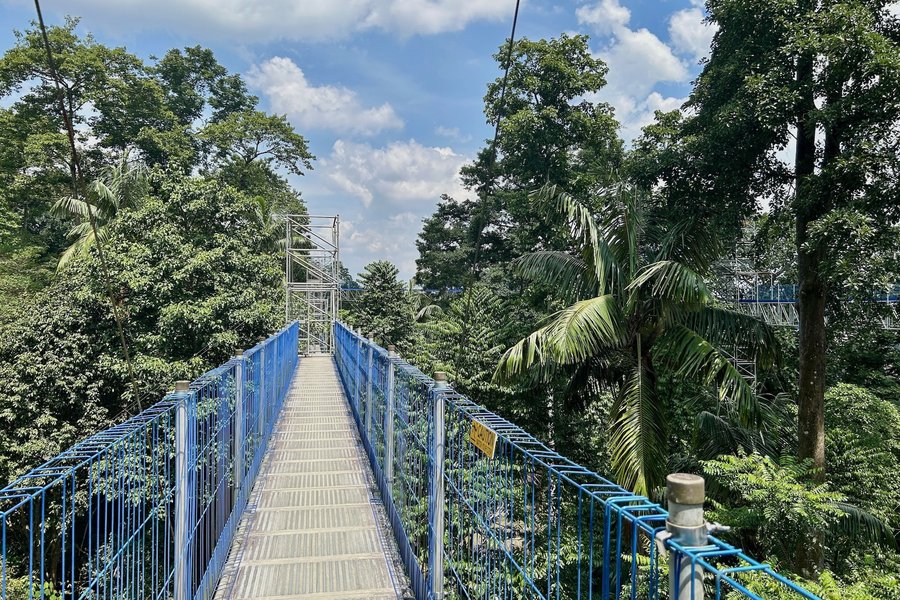
While planning a short trip to Indonesia and Malaysia, I decided it would be easy to add in a quick trip to FRIM Selangor on one of our transits through KLIA2 airport. At the time it was still tentative and looking unlikely to be added to the list, but of course like many of the nominated sites in 2025 it was of course added - making the stopover a must!
We've previously visited Kuala Lumpur multiple times, hence just deciding to visit only this site. At first I looked into public transport, including the speedy KLIA Express train, but the quickest and cheapest option (for 2 people) is a Grab taxi. It was about a 70 minute taxi ride each direction from KLIA2 with a little traffic on a Saturday, for the cheap price of 80-90 MYR each way (16-18 EUR).
While advance registration for the walks within the forest is necessary, no booking is required to visit Kepong Botanic Gardens and the Forest Skywalk. Just be warned both are closed on Fridays and the limited hours for the Forest Skywalk, including a long lunch break. Entry is 5 MYR to the botanic gardens and 40 MYR for the Forest Skywalk, for foreigners, plus an extra 10 MYR for the taller tower along the Skywalk.
The Forest Skywalk offers impressive views of the trees below and the adjacent protected section of the park. (Briefly opened to the public during COVID, but shut again after visitors interfered in experiments, such as …
Keep reading 0 comments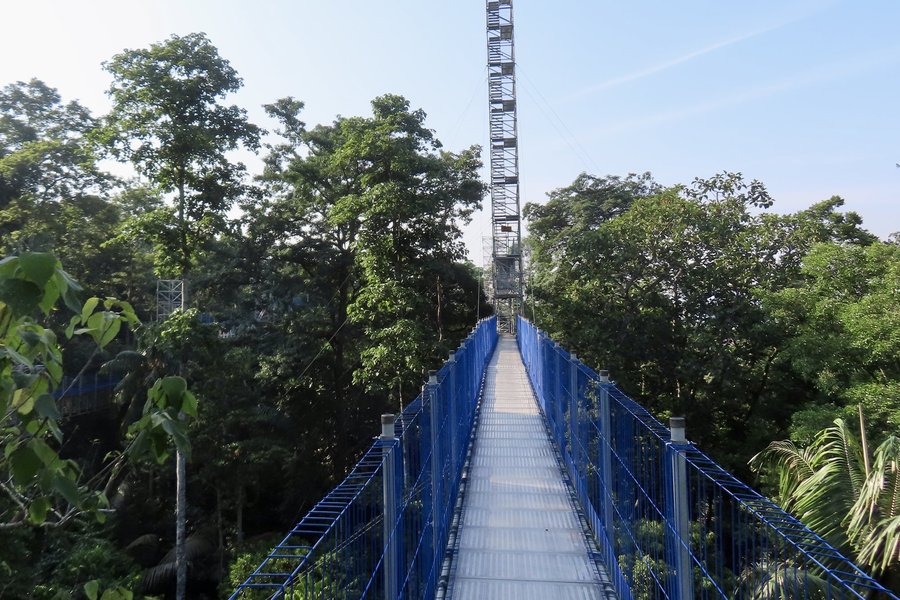
We visited the highly accessible Kepong Botanic Gardens (FRIM) and the Forest Skywalk. Frederick Dawson's review covers the less accessible portion of FRIM (worth reading). We enjoyed our weekday morning visit to Kepong Botanic Gardens. Upon arrival we took a forest trail and the shaded coolness was a particularly pleasant reprieve from the high temperature humidity. The dense under-story plants hide all trace that this area was a product of reforestation. The pond area is light on the decorative features and while nice enough, I'm not sure what it contributes to the sites OUV.
Afterwards, we made our way to the Forest Skywalk. Since it was a Tuesday morning, we were the only people on the structure. The highlights are looking down from the canopy toward the forest floor, views of the forested hills and nearby pond. All pleasantly scenic, but after visiting the Treetop Walk at Singapore's MacRitchie Reservoir Park, it was a bit underwhelming.
The Kepong Botanic Gardens (FRIM) is a fine introduction to this world heritage site. However, its a shame you cannot simply cross over from the botanic garden area to the forest research center. In fact, there was a lone security guard who prevented this. Hopefully in the future, the entire world heritage property is more accessible.
Keep reading 0 comments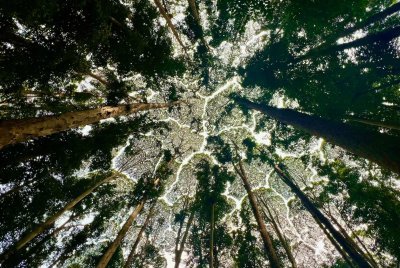
Tucked quietly on the northern fringe of bustling Kuala Lumpur lies the Forest Research Institute Malaysia (FRIM), an ecological treasure that remains surprisingly unknown to many, even among locals. Despite being just a short drive from the city center, FRIM is often overlooked in favor of other well-known attractions. Yet it offers something far more meaningful: a rare, immersive glimpse into Malaysia’s forest conservation efforts and the quiet beauty of tropical reforestation. FRIM features two main attractions, the public Skywalk in Kepong Botanic Garden and the restricted Forest Walk on the Keruing Trail inside FRIM's educational zone. While the Skywalk provides sweeping views above the canopy, the Forest Walk offers a more intimate, ground-level experience of the forest’s biodiversity and scientific significance. I opted for the Forest Walk, and it turned out to be the highlight of my visit though getting there took some effort. Booking the Forest Walk requires advance planning. The process is somewhat bureaucratic: you must email the FRIM office, await a reply, and then manually transfer the 150 MYR guide fee to a designated government bank account. There’s no online portal or instant booking system, which may feel outdated, especially for foreign visitors. However, once confirmed, the experience more than justifies the hassle.
Our guide was outstanding, informative, passionate, and deeply connected to the forest. What sets FRIM apart is that it’s not just a recreational park or nature spot. And importantly, FRIM is not a botanical garden. Unlike botanical gardens, which often cultivate plants in …
Keep reading 0 comments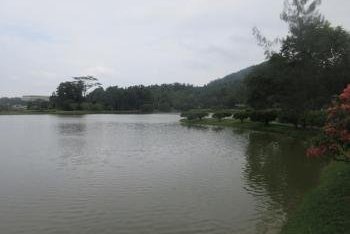
The site is in the suburbs of Kuala Lumpur, just about 10 minutes of driving from famous Batu Caves. FRIM is acronym of Forest Research Institute of Malaysia and the site is quite a big park and botanical garden. Entrance fee is 5.3 RM per non-Malaysian plus 5.3 RM for the car.
The botanical garden is quite nice, although it is not European style one with mostly exotic species. In fact there are only domestic ones. There should be much more adventurous walks, such as canopy walking tour but, according to the provided information, they are closed until further notice.
Although the place is worth a detour if you want to take a break from big city climate of Malaysian capital, I found nothing outstanding in this place. I admit I have no knowledge of scientific work behind, which potentially may be the main reason for description (Malaysian government plans to propose it in 2020). Based on what I saw, that will not be a major addition to the List.
Keep reading 0 comments
